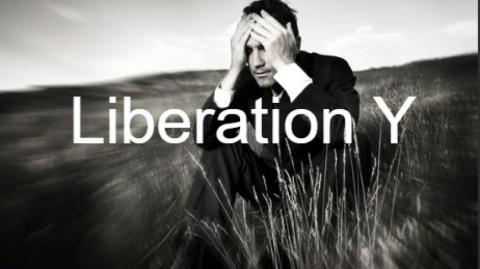Logic 102: Arguments (...or how to PWN n00bs on the internet) - MGTOW
This part of my series on formal logic we explore the composition of arguments. We also learn how to identify formal arguments in everyday passages as well as identify types of passages that do not contain arguments.
Patreon
https://www.patreon.com/ground....work_for_the_metaphy
Paypal
https://www.paypal.com/cgi-bin..../webscr?cmd=_s-xclic
Script
http://www.gftmom.com/portfoli....o-item/logic-102-arg
In the last video, we covered sentences and propositions. Before we begin this video, let us do a short recap of the content of the last video.
There is a difference between sentences and propositions. Sentences are the grammatically correct utterances we issue in the English language. A proposition or sometimes referred to as a statement, on the other hand, is what an unambiguous declarative sentence asserts. We also learned that no exclamation like “Hi!” can be a proposition. We learned that questions cannot be propositions. And finally, we learned that ambiguous sentences, such as sentences with indexicals cannot be propositions.
What we have learned in the last video needs to be carried into this video as all the sentences we will be dealing with are propositions. In this video, we will learn the form of an argument, how to identify arguments, and how to identify passages which do not contain arguments.
So, let’s get started.
In an argument we accept one proposition, the conclusion, on the basis of other propositions, the premises. The premises are said to contain evidence for the conclusion; the conclusion is said to follow from the premises. In most general terms, we can say that an argument is a group of propositions where one proposition, the conclusion, is claimed to follow from the others, the premises. Consider the following example of an argument
P1: All simps are manginas
P2: Billy is a simp
C: Therefore, Billy is a mangina
The conclusion is sometimes separated off from the premises with a horizontal line. An argument must have at least one premise though it can have many premises. However, an argument has exactly one conclusion.
That an argument has only one conclusion is a matter of convention. Logicians have simply agreed that they will use the term ‘argument’ in such a way that there is a one-to-one correspondence between arguments and conclusions. Now, of course, it is sometimes possible to draw two conclusions from the same premises. In such a case, however, we speak of there being two arguments. Consider an example of such situation. Let us adopt the following set of premises:
P1: Whoever reads Plato is awesome.
P2: All listeners of Marcus’ youTube channel read Plato.
Now, there are a couple of conclusions we can draw from these premises. For instance, we can draw the conclusion that Marcus (who is a listener of Marcus’ youTube channel, of course) is awesome. In doing so, we are making the following argument:
P1: Whoever reads Plato is awesome.
P2: All listeners of Marcus’ youTube channel read Plato.
C: Therefore, Marcus is awesome.
But we can also make the following argument:
P1: Whoever reads Plato is awesome.
P2: All listeners of Marcus’ youTube channel read Plato.
C: Therefore, no listener of Marcus’ youTube channel is not awesome.
So here we have made two arguments from the very same premises as we have drawn two conclusions from this set of premises. In this way, all arguments follow the pattern and notation we have supplied. I encourage you to use this notation when attempting to formulate your own thoughts. By using this notation, you will quickly discover whether or not what you are attempting to prove can actually be inferred from the premises you are putting forward as evidence. By using this notation, you can also help improve your video making or writing skills. By starting out with a formal argument, you can use each premise as if it were a chapter heading. First state your first premise, then provide exposition for that premise until you are satisfied that you have demonstrated the premise true. Next, you move on to the next premise and repeat the process. If you are successful in your argument, you are free to boldly state the conclusion at the end.
Recognizing Arguments
Okay, now that we know what the structure of an argument looks like. Let us now turn to recognizing formal arguments within common speech and text passages.
For our purposes in this video series, arguments will be presented to you in a standardized format where it will be clear what the premises are and what the conclusion is. Arguments, however, usually occur in less obvious forms in real life. In fact, the more logic one does the better one becomes at understanding arguments and then at identifying arguments in practice. You should not expect this skill of yourself just yet. Still it is useful to learn a few points.
0



 4_ArchAngel
4_ArchAngel
 jesuinomgtow
jesuinomgtow
 Sandman
Sandman
 NerokeFive
NerokeFive


 profhugodegaris
profhugodegaris














Log in to comment